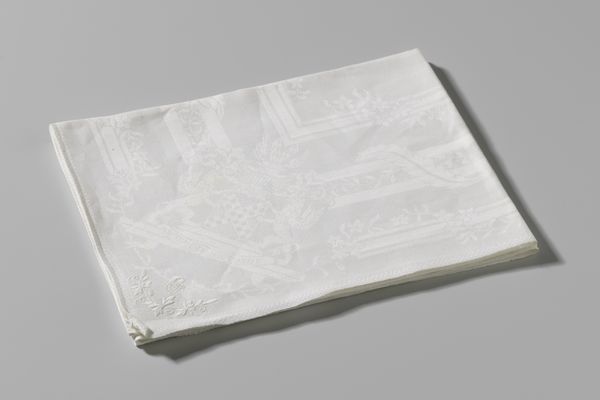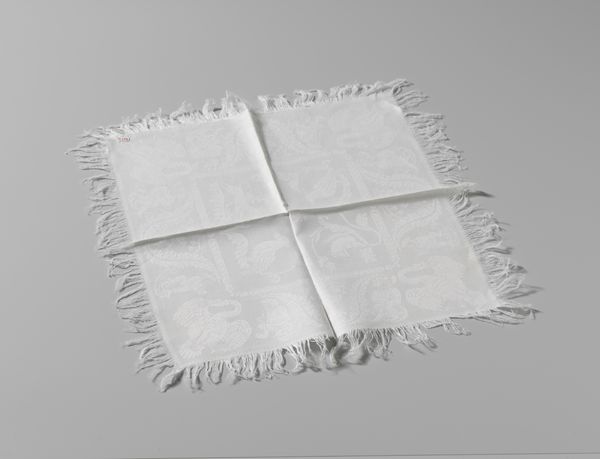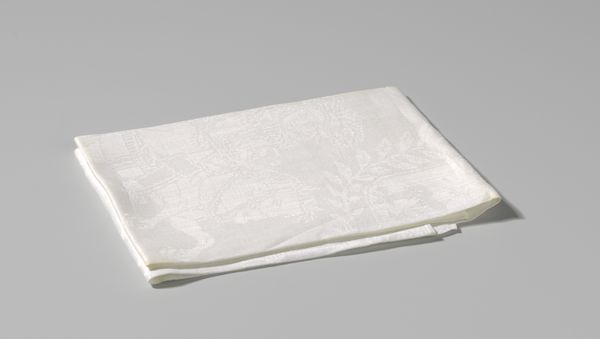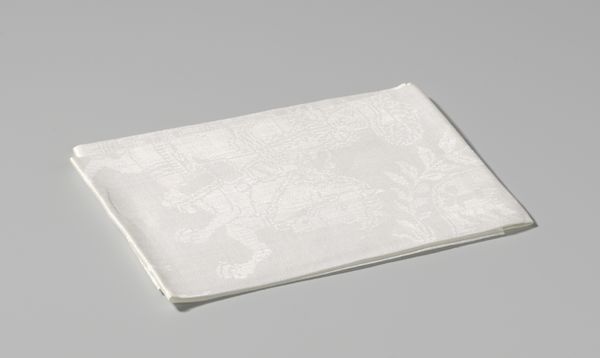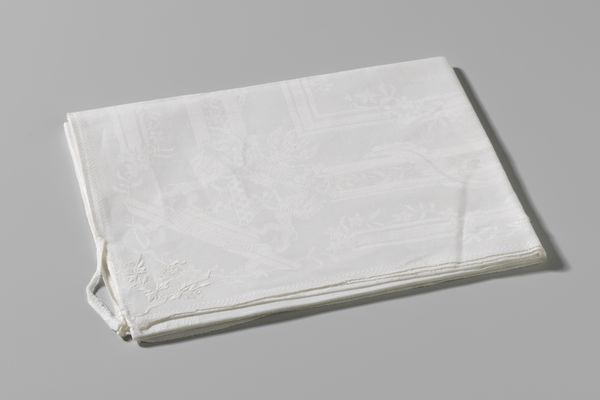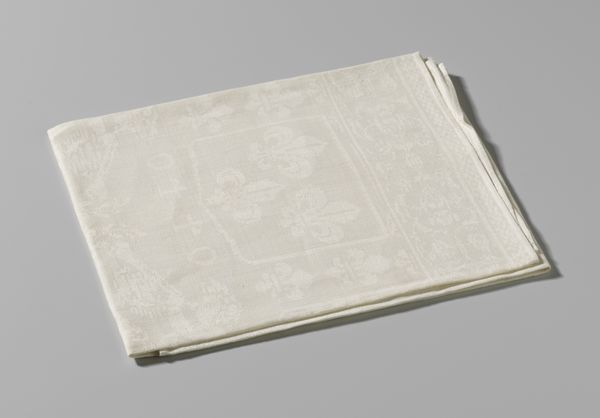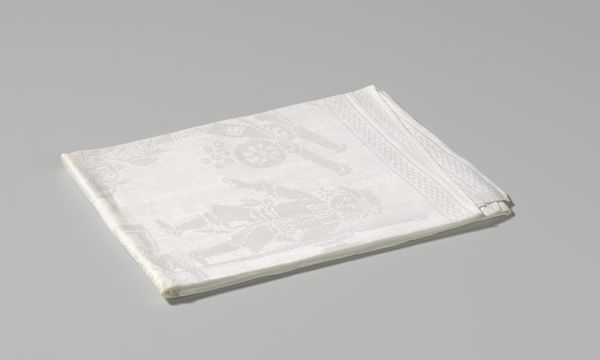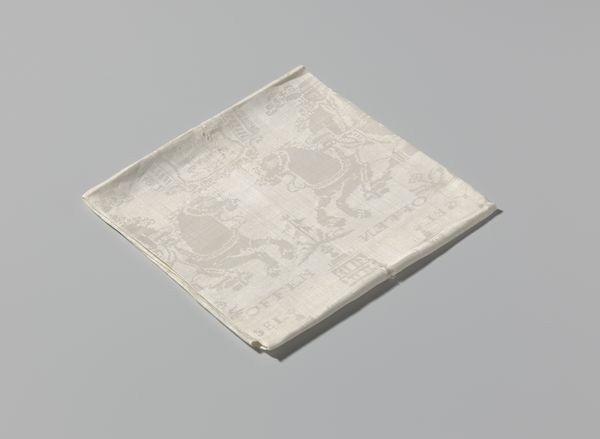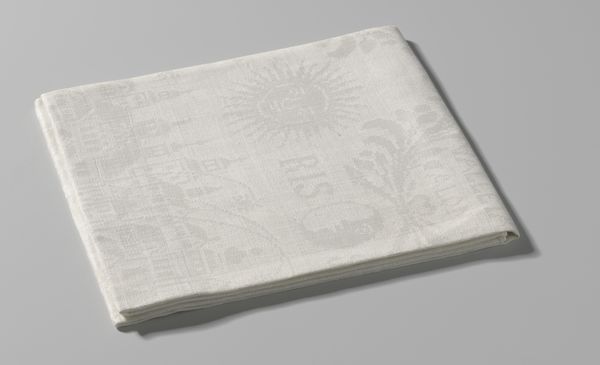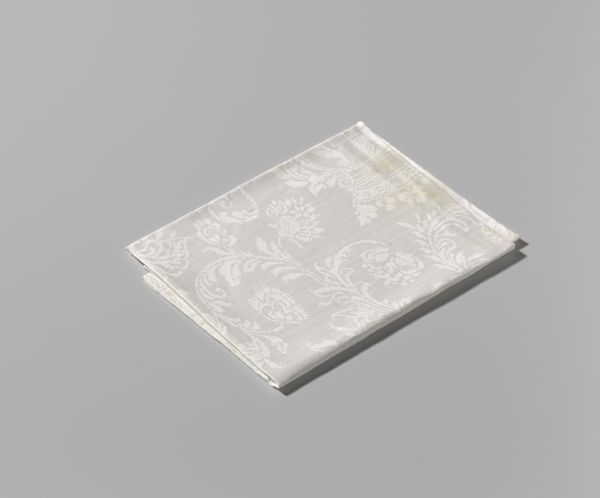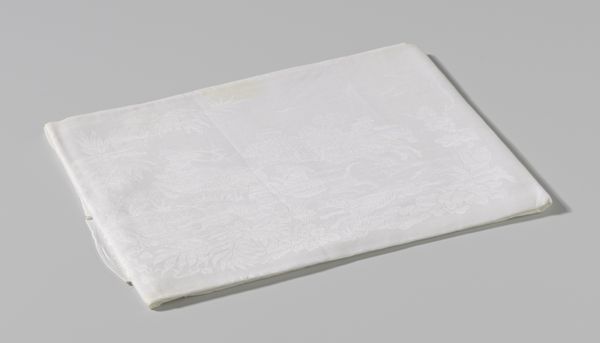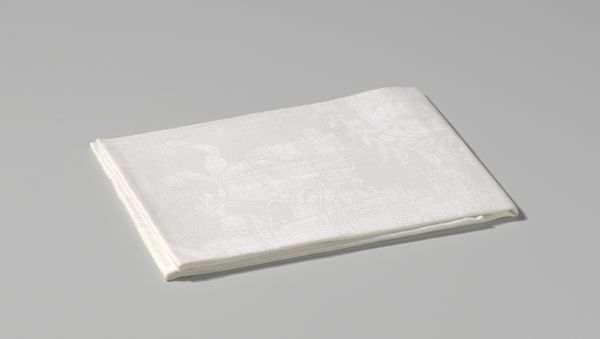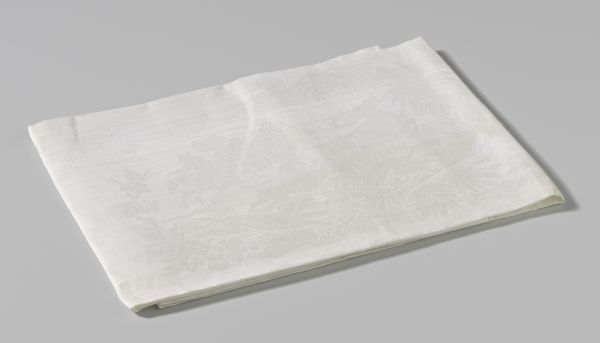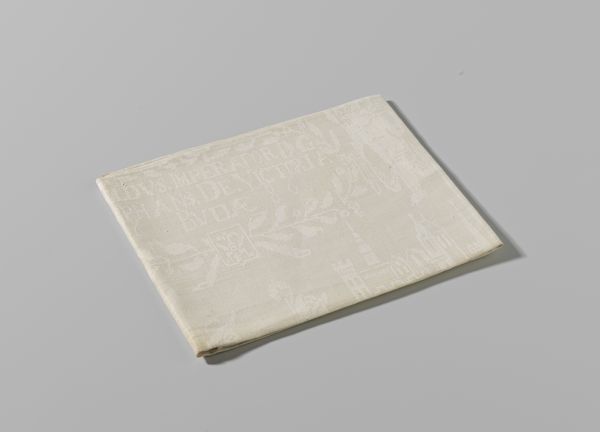
fibre-art, weaving, textile
#
fibre-art
#
weaving
#
textile
#
geometric
#
decorative-art
Dimensions: height 36 cm, width 34.5 cm
Copyright: Rijks Museum: Open Domain
Curator: This striking piece of decorative art is titled "Pijprokende Turken," crafted sometime between 1850 and 1899 by the Gebroeders Rath firm. At its heart lies a meticulously woven textile, displaying geometric and stylized figures. What are your initial thoughts? Editor: Immediately, I see a formal exploration of domesticity, an intersection of function and design that elevates everyday ritual. The all-white palette and fringe detail lend it an almost ethereal, precious quality despite its functional nature. Curator: Precisely! The medium—fibre art, specifically weaving—allows us to consider the labour involved in its creation, especially in the 19th century. Examining the division of labor within the Gebroeders Rath firm could be revealing, in this context. Editor: It is intriguing to question the representation of "Turken" (Turks), a depiction from a firm presumably in a European context. We must be critical of its role in shaping and possibly perpetuating colonialist perceptions through design within a private, domestic space. The question here is the function, considering its purpose, what was the artist trying to state with the geometric weaving style of swans and deer, and would "Turken" ever use it? Curator: A vital point, and also an interesting argument as this opens the idea that it was not functional in itself but more so for decorative use and cultural understanding. The act of weaving here elevates the material. Did they see the swans or deer with this representation in mind? The choices made by the artist in relation to market expectations become clearer when studying the use of fibre in textile production at the time. Editor: I agree! Let's also consider how this piece exists within a broader cultural tapestry—textile production has consistently been a tool for women's artistic expression and economic survival, for creating culture and community building within that specific context. It's crucial to position pieces like this one in conversation with those often marginalized narratives. Curator: Indeed. Studying this piece highlights how deeply intertwined design, production and social history are in a textile piece from this era, especially since we know that similar designs were circulating at the time. Editor: Thinking through both materiality and context offers a critical lens through which we can access a richer understanding of both craft and culture in the 19th century, including that representation of Turks that may be more subtle. Curator: A fascinating convergence of artistic production and socio-political context! Editor: It truly makes you consider what everyday objects like this one can convey about broader societal values, especially representation!
Comments
No comments
Be the first to comment and join the conversation on the ultimate creative platform.
